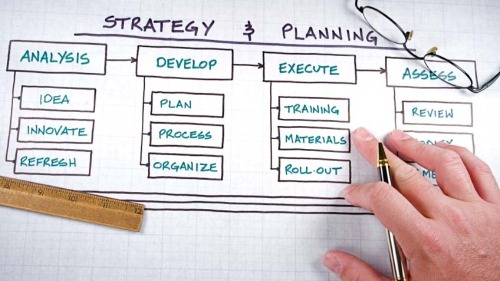Ensure the Organisation's Structure is Appropriate*
An organisation's structure and culture provide the environment in which people operate

Organisational structure refers to the way tasks are divided up, how the work flows, how this flow is coordinated and the forces and mechanisms that allow this coordination to occur.
It determines the allocation of responsibilities for different functions and processes to different entities such as the branch, department, workgroup and individual.
An organisation's structure and culture provide the environment in which people operate and affect both communication and decision making. An appropriate structure is important as it determines the manner in which the organisation operates and performs.
Organisations are structured in different ways:
by function such as production, marketing, human resources, finance etc.
- by regional area – a geographical structure e.g. with a marketing manager North, marketing manager South etc
- by product e.g. marketing manager crisps, marketing manager drinks, etc
- into work teams, etc.
The organisational chart cannot fully capture the organisational structure but gives a place to begin when studying it.
Reporting in organisations often takes place down the line. An employee might be accountable to a supervisor, who is accountable to a junior manager, who is then accountable to a senior manager – communication and instructions can then be passed down the line.
Four basic elements of organisational structure are: -
- span of control – number of people directly reporting to the next level
- centralisation – how power is distributed throughout the organisation
- formalisation – the extent to which rules and procedures are written out and enforced
- departmentalisation – the extent to which work is distributed to specialist departments
A vertical organisational structure has one or more levels between the most junior and the senior most employees. Individuals are likely to have a limited span of control, with activities formally allocated to departments. This helps in proper distribution of work but can be harmful in terms of efficiency and decision making.
A flat organisation is much more relaxed, with less layers of management and a large number of direct reports to a single boss. This could provide greater speed in the decision making process but then the boss ends up taking care of a lot of things, thus making delegation difficult.
A matrix organisation is one that is organised in two dimensions, with responsibilities allocated by both function and product. A matrix organisation frequently uses teams of employees to accomplish work, in order to take advantage of the strengths, as well as make up for the weaknesses, of functional and decentralised forms.
The concept of a virtual enterprise is becoming popular in creative and IT industries.
A virtual enterprise is a temporary alliance of people and companies that assemble for the purpose of a specific business task. The ability to work together, possibly without any formal resource base or physical meetings, is facilitated by the evolution of information technology and communications.
The classic example is film production, in which people and resources come together to fulfil specific needs on a project-by-project basis – and then disperse. Similar or different groups might be assembled for the next project, or they might never work together again.
Corporate governance check
Does your board review the organisation's structure and culture?
- Ensure that the board structure and processes are appropriate to deliver the organisation's strategy effectively?
- Ensure that the organisation's structure is appropriate to deliver its strategy effectively?
- Ensure that the culture supports continuous change, enterprise and innovation?
- Invest in technology, training and employee development to support the strategy?
- Challenge the continuation of structures and practices beyond their useful life?
* Inspired by the Institute of Directors Standards for the Board.
What to do next
If you would like to know more about how we can support your personal development as a director, facilitate an away day or corporate retreat, or assist with your board's corporate governance, contact us or call +44 (0) 7970 891 343.



